Day 3 of a four day Autumn Tour in Norfolk today. It was a misty start again, and although it brightened up and there were some nice sunny intervals, it remained rather hazy. It was warm in the sunshine though, a lovely day to be out if a little too good for producing migrants.
Our destination for the morning was Holkham. Parking at Lady Anne’s Drive, it was misty looking out across the grazing marshes. There were lots of Greylag Geese close to the road, and a few distant Pinkfeet down in the grass, with more flying over calling. A Grey Heron flew in and landed in the middle, looking very evocative in the mist, amongst the spiders’ webs covered in dew.
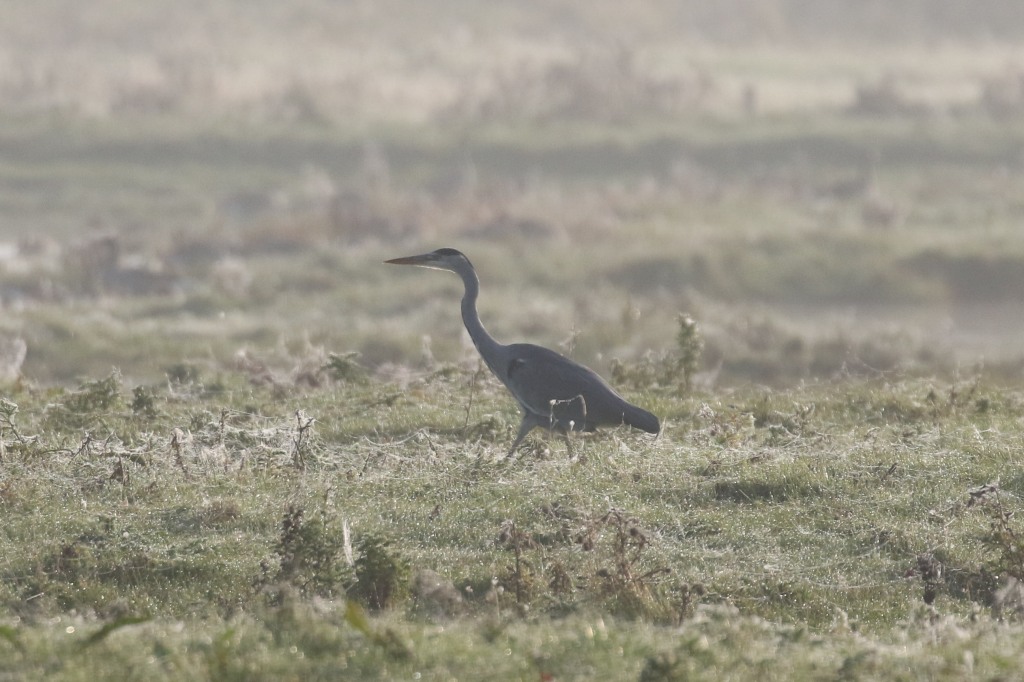
We managed to find a small group of Grey Partridges out in the grass too, which we got in the scopes. They disappeared into one of the channels, so we walked further up to see if they would come out again closer to The Lookout, but we couldn’t find them again.
Walking west, on the south side of the pines, we could hear a few tits in the trees, particularly the squeaky song of Coal Tits, but none close enough to the path to see. We did see a couple of Goldcrests flicking around in the pines.
Out at Salts Hole, there were several Little Grebes out on the water, diving, chasing each other, and laughing maniacally. A few Gadwall were on here today with the Mallards. We heard a Kingfisher call and looked over to see it on one of the posts at the back, but it didn’t stop long and quickly flew off behind the trees.
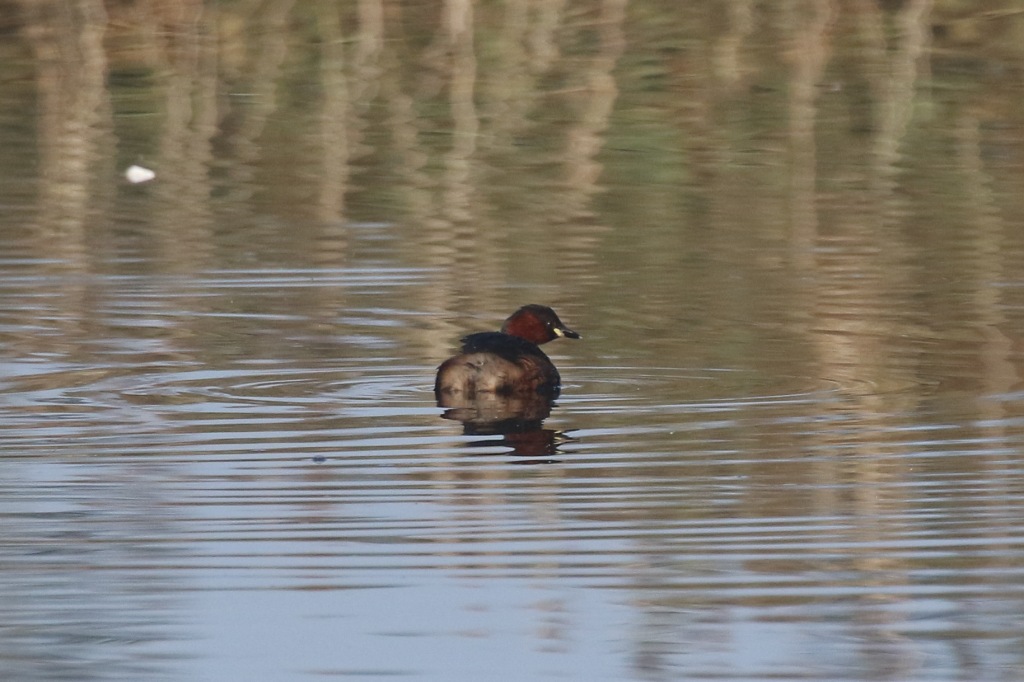
Continuing west, we heard Long-tailed Tit calling and thought we had found a tit flock, but it turned out to be just one Long-tailed Tit on its own which came out of the trees and moved quickly on past us. We stopped to scan from the gate – a couple of Linnets and a Reed Bunting flew up into the top of the large hawthorn on the edge of the ditch. A male Pheasant was shining in the morning sunshine. A Marsh Harrier flew across behind the reedbed. Two Great White Egrets came up at the back, one seemingly chasing the other off.
At the boardwalk by Washington Hide, the sycamores were very quiet, so we walked on to the end to look out at the beach. It was a big high tide again this morning, only just starting to go back out now. We could see a line of birds roosting on the sandbar, which had been the high point of the beach just beyond the dunes. Six Sandwich Terns were standing on the edge of a small group of Black-headed Gulls. There was a large huddle of Sanderling nearby, with a couple of Ringed Plover and a few Dunlin with them. Scanning further along, we found more Grey Plover, along with two or three Bar-tailed Godwits.
Looking out at the sea beyond, we could see lots of Red-throated Divers on the water, several Great Crested Grebes, and a scattering of Razorbills and Guillemots. As we had seen yesterday at Cley, there appear to be lots of seabirds feeding unusually close inshore at the moment.
Back to the boardwalk, we had a quick scan of the grazing marshes. There were lots of Pink-footed Geese out on the grass in the distance but no sign of any Great White Egrets now. A Marsh Harrier circled up with two Common Buzzards. One of the Buzzards chased after the Harrier, and as they flew towards us, we could see the latter had something in talons. The Buzzard swooped at the Harrier until it dropped it, the Buzzard then catching it in midair. The two then landed down on the grass, the Buzzard eating, while the Marsh Harrier looked on hungrily.
There were lots of Common Darters basking on the boardwalk handrail as we dropped back down to the track. Three paragliders came west over the grazing marshes, making lots of noise and flushing all the Pink-footed Geese and Greylags, which flew round calling.
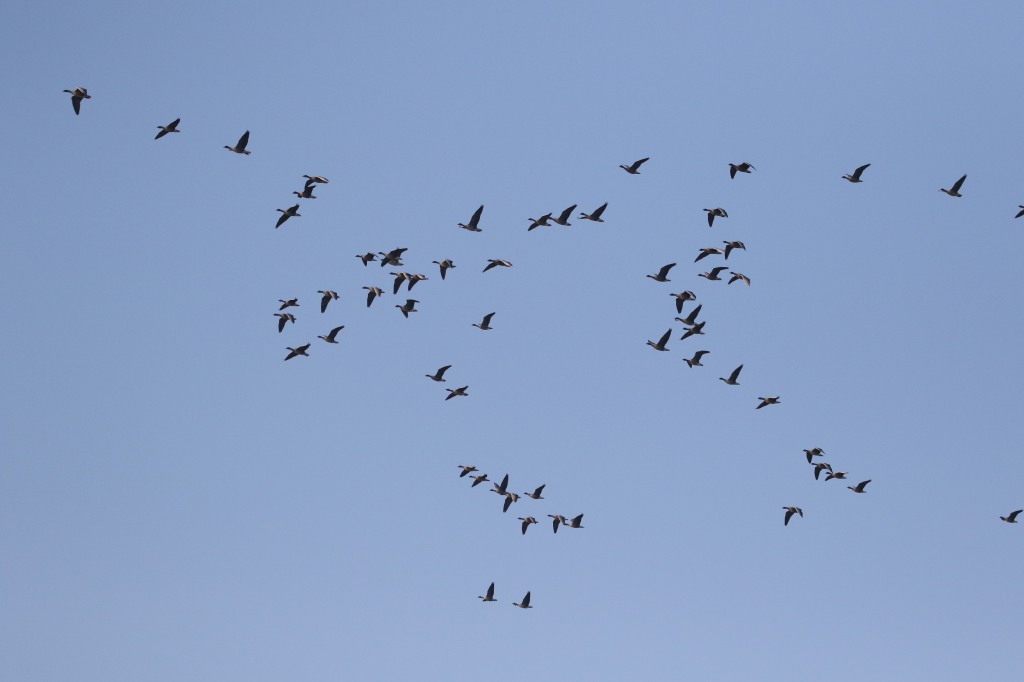
Further on, we could hear Goldcrests and tits in the trees as we rounded the corner by Meals House. As we stopped to look, a Yellow-browed Warbler started calling in the sycamores. It appeared briefly out of the ivy, but promptly flew across the path and disappeared into the garden. Thankfully it quickly came back into the sycamores and we had a better view now, as it flicked around in the leaves, before it disappeared into the trees behind. Our third Yellow-browed Warbler in three days – a pretty good return, given how scarce they have been this year.
Moving on, just before the crosstracks we heard a Mistle Thrush call and looked up to see five flying east overhead. A smaller thrush on the end of the line was a single Redwing. There were Siskins calling over the pines too – we heard them all the way down – but be only had a quick glimpse of one or two as they flew over. There were Jays moving again too today, but fewer Starlings than the previous couple of days. We would have hoped to see more thrushes and finches coming in from the continent at this time of year, but perhaps the weather is just too good at the moment.
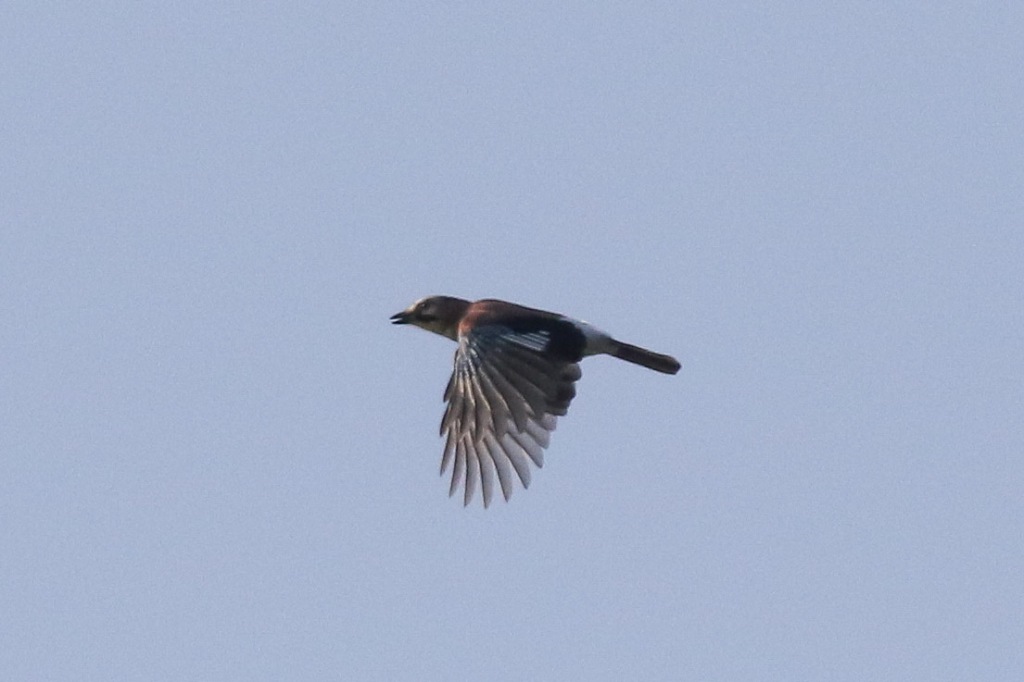
We saw some people going into Joe Jordan Hide ahead of us, so we decided to continue straight on past the crosstracks. Another tit flock was in the edge of the pines just beyond, and flew across to the small grove of trees in the reeds just beyond. We could see several Long-tailed Tits preening in the hawthorns and two Treecreepers chasing each other round the trunk of one.
Looking out towards Decoy Wood out on the grazing marsh beyond, we could see a Great White Egret standing on the edge of the reeds. We got it in the scope, so we could see its long, yellow dagger of a bill.
We walked on to the west end of the pines. It was warming up nicely now in the sunshine and there were more dragonflies out, mostly Common and Ruddy Darters, and one or two Migrant Hawkers too. We stopped to scan from the gate, and could see several Stonechats along the new fence line, but nothing else of note.
As we walked in through the trees to the start of the dunes, we could hear several Chiffchaffs calling. There had apparently been a Siberian Chiffchaff earlier, but despite listening carefully and looking in all the most likely trees, we couldn’t find any sign now. We sat down by one of the dells in the edge of the dunes for a rest – they are usually full of sylvia warblers at this time of year, but despite lots of berries on the bushes it was disappointingly quiet today.
Once everyone had recovered, we headed back for lunch. We planned to have lunch in The Lookout. As a few of the group went to get the food from the minibus, a Grey Wagtail flew in calling and dropped down by a puddle under the holm oaks at the top of Lady Anne’s Drive briefly.

After lunch, we had a quick walk out to the beach. There were lots of Black-headed Gulls feeding on the wet saltmarsh as we passed, presumably with food washed in by this morning’s big tide. A Rock Pipit flew over the saltmarsh calling and there were several Meadow Pipits feeding on the edge of the dunes.
With a few reported along the coast in the last few days, we were hoping for one of the scarcer divers or grebes here – Holkham Bay is often a good place for them in autumn. There were lots of birds on the sea here. A small raft of seven Common Scoter was just offshore, with a single redhead Red-breasted Merganser close by. There were lots of Red-throated Divers and Great Crested Grebes again, but despite trying hard we couldn’t find anything else. There were lots of auks this end of the beach too.
We were just about to leave, but a last scan through the gulls along the shoreline revealed another young Caspian Gull, once again a first calendar year bird. It was lovely out on the beach, but we had one more thing we wanted to do this afternoon, so we walked back to the minibus.
We drove inland this time, down to the edge of the Brecks. We were looking for Stone Curlews, so we pulled up by a field where they are regularly to be found. Scanning from the first gate, we immediately located our first three, even if they were a little distant. They were just beyond a dip in the ground, and eventually we managed to see six Stone Curlews from here, as more moved into view. There were lots of Starlings and Lapwings in the fields here too, plus Linnets and several Pied Wagtails.
Driving further down the road, we stopped to scan from another gateway. As we looked back, we could see more Stone Curlews now we were looking from a different angle, and while we watched, still more stood up or appeared from behind vegetation. Scanning with the scopes, we could count at least seventeen now. They were closer from here too, a much better view, and we could see their bright yellow eyes.
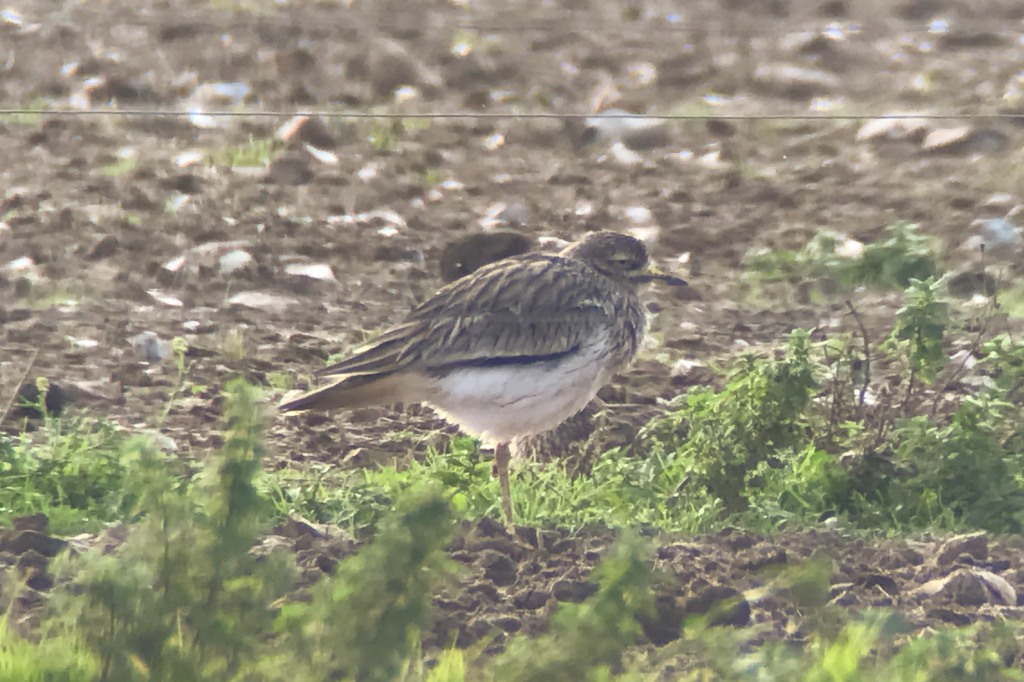
We watched the Stone Curlew for a while. The Brecks is one of their two strongholds in the UK, and they are mainly summer visitors here. Most will soon be on their way down to Iberia or North Africa for the winter. Just as we were about to leave, we had a last scan round all the fields and found another four distantly looking the other way. The ground slopes away here, so there were probably still more out of view. Still, we were happy to settle for at least 21! It was a nice way to end the day, and a new bird for several of the group.
















